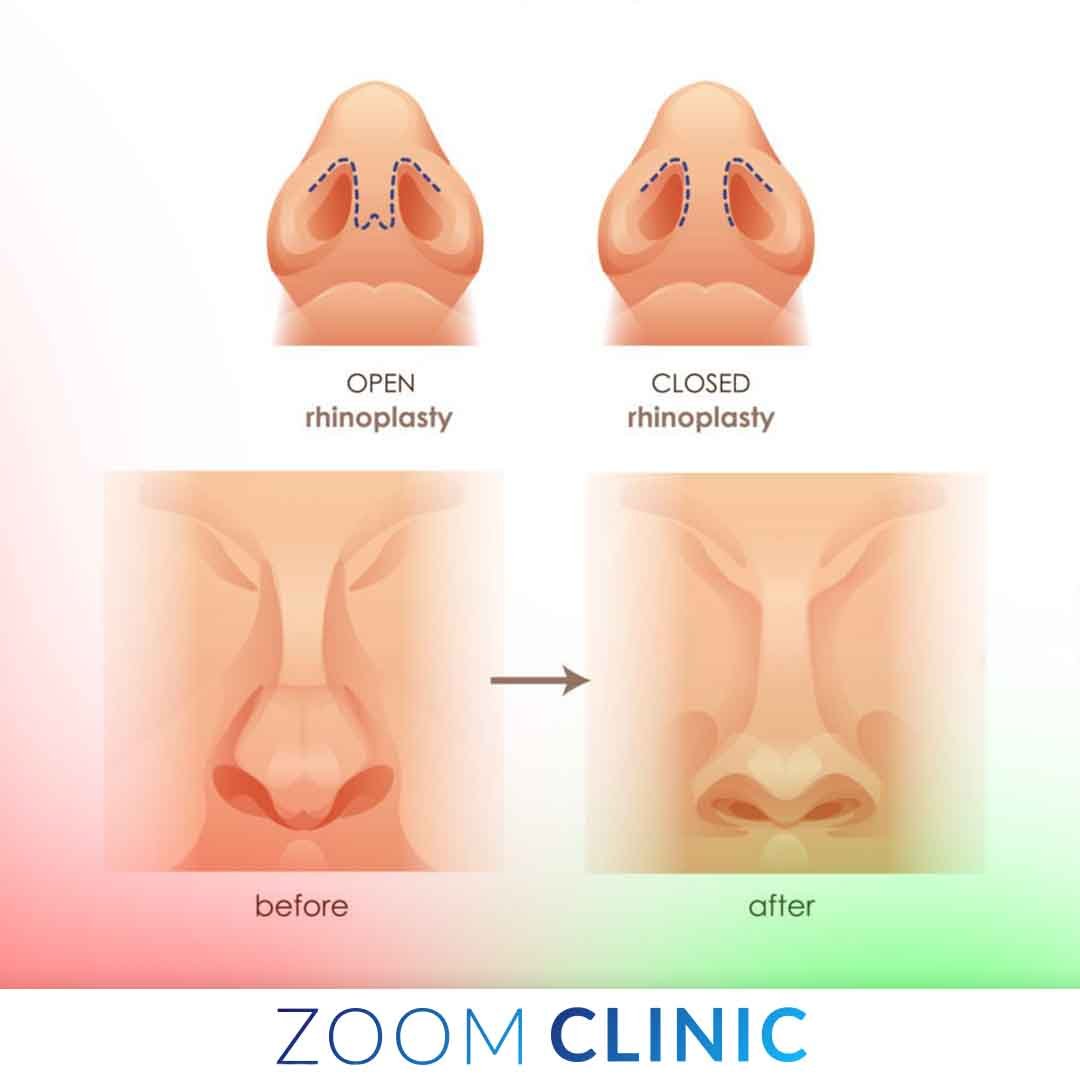Rhinoplasty, commonly known as a nose job, is one of the most sought-after cosmetic procedures worldwide. Whether for aesthetic enhancement or functional improvement, rhinoplasty can significantly alter one’s facial appearance and confidence. At Zoom Clinic, the best rhinoplasty clinic in Turkey, we understand the importance of tailoring the rhinoplasty approach to each individual’s unique needs. In this comprehensive guide, we delve into the different rhinoplasty techniques—specifically Open and Closed Rhinoplasty—to help you understand which approach might best suit your needs.
Table of Content
What is Rhinoplasty?
Rhinoplasty is a surgical procedure that aims to reshape, resize, or improve the functional aspects of the nose. It can address a wide range of concerns, including a prominent hump, asymmetry, a drooping nasal tip, or breathing issues caused by a deviated septum. While rhinoplasty is often perceived as a purely cosmetic procedure, it also plays a significant role in restoring nasal function and improving one’s overall quality of life.
There are two main approaches to rhinoplasty: Open Rhinoplasty and Closed Rhinoplasty. These approaches differ in terms of incision placement, surgical exposure, and the complexity of changes that can be made. Let’s explore both techniques in detail.
Open Rhinoplasty
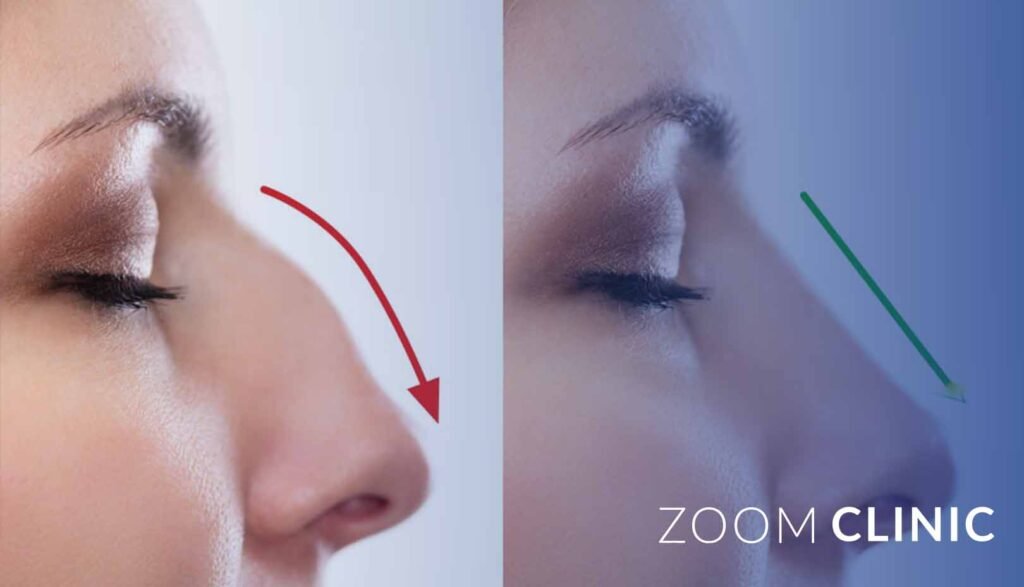
What is Open Rhinoplasty?
Open rhinoplasty is a surgical technique where an incision is made across the columella—the tissue between the nostrils. This incision provides the surgeon with better access to the nasal structures, allowing for a more detailed reshaping of the bone and cartilage. Open rhinoplasty is often the preferred choice for more complex cases, where significant structural changes are required.
How Open Rhinoplasty Works
During an open rhinoplasty, the surgeon makes a small incision across the columella, creating a “fold-back” mechanism that allows the nasal skin to be lifted. This process provides the surgeon with full visibility and access to the nasal anatomy, including the tip, septum, and nasal framework. By having a direct view, the surgeon can make precise adjustments to the bone and cartilage, ensuring an optimal outcome.
Advantages of Open Rhinoplasty
- Enhanced Visibility: One of the primary advantages of open rhinoplasty is the enhanced visibility of the nasal structures. This is particularly important in complex cases where precise changes are required to achieve a harmonious result.
- Greater Precision: The direct access to the underlying nasal anatomy allows for more precise manipulation of the cartilage and bone. This is especially beneficial when correcting significant asymmetry or reconstructing the nose after trauma.
- Ideal for Complex Cases: Open rhinoplasty is often recommended for patients who require extensive changes, such as major tip reshaping, reconstruction, or correction of previous rhinoplasty results (revision rhinoplasty).
- Customization: The open approach allows for greater customization of the nose shape, as the surgeon can see exactly how each adjustment impacts the overall structure.
Disadvantages of Open Rhinoplasty
- Visible Scarring: Although the incision made in open rhinoplasty is small and typically heals well, there is a possibility of a slight visible scar across the columella. However, most patients find that the scar fades significantly over time.
- Longer Recovery Time: Since open rhinoplasty is more invasive than the closed approach, it usually involves a longer recovery period. Patients may experience more swelling, which can take several weeks to subside.
- Increased Swelling: The open approach can lead to more swelling compared to closed rhinoplasty. Full results may take longer to become visible due to the prolonged healing process.
Closed Rhinoplasty
What is Closed Rhinoplasty?
Closed rhinoplasty, also known as endonasal rhinoplasty, is a technique that involves making incisions inside the nostrils. This means there are no external cuts, resulting in no visible scarring. Closed rhinoplasty is generally recommended for patients who require minor to moderate adjustments to the shape or size of their nose.
How Closed Rhinoplasty Works
In closed rhinoplasty, all incisions are made inside the nostrils, providing access to the underlying bone and cartilage. The surgeon works through these small internal incisions to reshape the nasal framework. While the visibility is more limited compared to open rhinoplasty, an experienced surgeon can achieve excellent results with this technique, particularly for patients with straightforward aesthetic goals.
Advantages of Closed Rhinoplasty
- No Visible Scars: One of the most appealing aspects of closed rhinoplasty is that all incisions are made inside the nose, leaving no visible external scars.
- Shorter Recovery Time: Since the procedure is less invasive, patients typically experience a shorter recovery period compared to open rhinoplasty. Swelling and bruising are usually less pronounced, allowing for a quicker return to normal activities.
- Reduced Swelling: Closed rhinoplasty tends to result in less swelling compared to the open approach, which means that the final results can be seen sooner.
- Ideal for Minor Adjustments: Closed rhinoplasty is well-suited for patients who need minor to moderate changes, such as refining the nasal bridge or tip without significant reconstruction.
Disadvantages of Closed Rhinoplasty
- Limited Access: The main drawback of closed rhinoplasty is the limited access to the nasal structures. This can make it more challenging to perform complex reshaping or detailed adjustments to the nasal tip.
- Less Precision for Complex Cases: Closed rhinoplasty may not be the best choice for patients requiring extensive correction or those undergoing revision surgery, as the limited access makes it harder to achieve significant structural changes.
- Surgeon Skill Level: Closed rhinoplasty requires a high level of skill and experience, as the surgeon must work through smaller incisions without the direct visibility offered by the open technique. Choosing an experienced rhinoplasty surgeon is crucial for achieving the desired outcome.
Open vs. Closed Rhinoplasty: Which is Right for You?
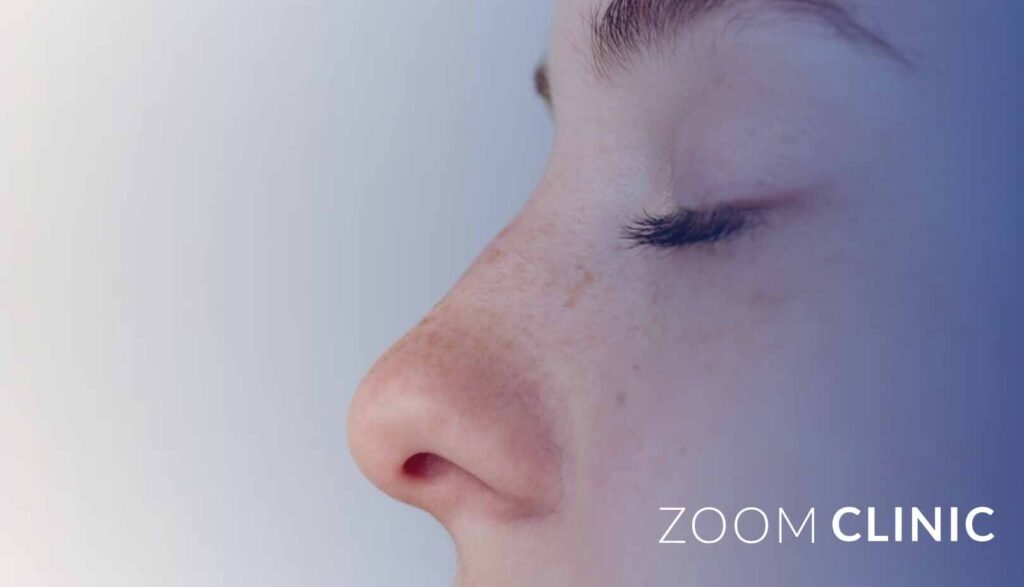
The choice between open and closed rhinoplasty depends on several factors, including the complexity of the desired changes, the patient’s unique nasal anatomy, and the surgeon’s expertise. Here are some key considerations to help determine which approach might be best for you:
1. Nature of the Changes Needed
- Open Rhinoplasty: Ideal for patients who need significant reshaping, such as major tip modification, correction of nasal asymmetry, or reconstruction. The open approach allows for more precise adjustments, making it the preferred choice for complex cases.
- Closed Rhinoplasty: Suitable for patients who need minor to moderate adjustments, such as refining the nasal bridge or adjusting the tip. Closed rhinoplasty is less invasive and involves a quicker recovery period, making it ideal for those who want subtle changes.
2. Revision Rhinoplasty
- Open Rhinoplasty: If you’ve had a previous rhinoplasty and are unhappy with the results, open rhinoplasty is often the recommended approach. The enhanced visibility allows the surgeon to address issues from the previous surgery more effectively.
- Closed Rhinoplasty: While closed rhinoplasty can be used for revisions, it is generally limited to less complex cases where minor adjustments are needed.
3. Recovery Considerations
- Open Rhinoplasty: The recovery period for open rhinoplasty is typically longer, with more swelling and a greater chance of visible scarring. However, the benefits of enhanced precision and customization often outweigh these drawbacks for patients requiring significant changes.
- Closed Rhinoplasty: Closed rhinoplasty offers a faster recovery with less swelling and no visible scarring. Patients can often return to their daily activities sooner, making it an attractive option for those with a busy lifestyle.
4. Scarring Concerns
- Open Rhinoplasty: The small incision across the columella may leave a slight scar, although it usually fades significantly over time. For most patients, the scar is barely noticeable once fully healed.
- Closed Rhinoplasty: Since all incisions are made inside the nostrils, there are no external scars with closed rhinoplasty. This makes it an ideal choice for patients who are concerned about visible scarring.
Choosing the Right Surgeon
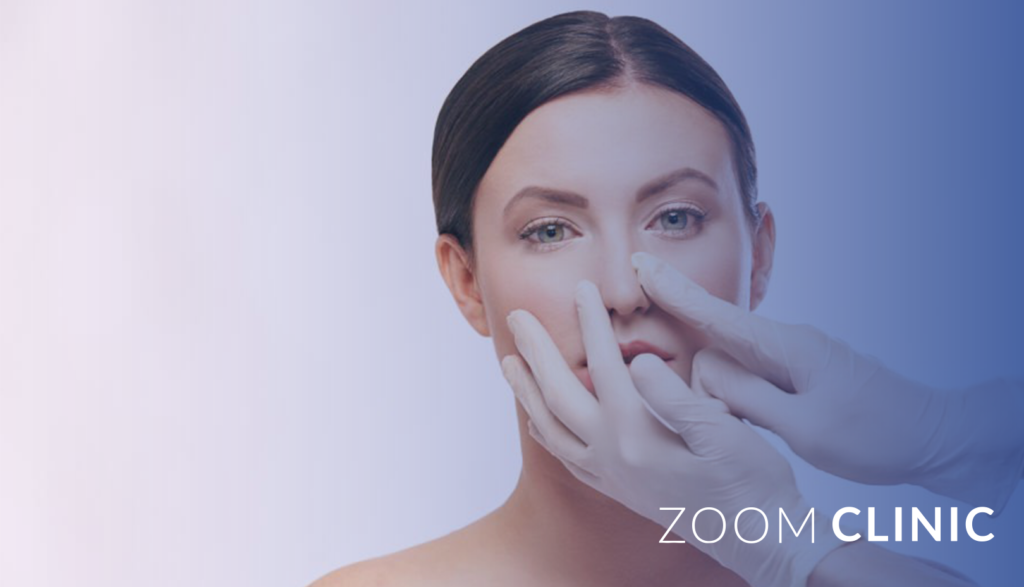
Regardless of whether you opt for open or closed rhinoplasty, choosing the right surgeon is crucial for achieving the best results. Rhinoplasty is one of the most challenging cosmetic procedures, requiring a deep understanding of nasal anatomy, an artistic eye, and surgical precision. At Zoom Clinic, our team of experienced rhinoplasty surgeons is dedicated to delivering exceptional results that enhance both the appearance and function of the nose.
Our surgeons are skilled in both open and closed rhinoplasty techniques, allowing us to tailor the approach to each patient’s unique needs. We prioritize patient safety, satisfaction, and natural-looking outcomes, ensuring that you feel confident and comfortable throughout your rhinoplasty journey.
Recovery and Aftercare
The recovery process for rhinoplasty varies depending on the technique used and the extent of the changes made. Here are some general guidelines for recovery and aftercare:
Open Rhinoplasty Recovery
- Initial Recovery: Patients can expect some swelling and bruising around the nose and eyes for the first 1-2 weeks. The external sutures are typically removed after 5-7 days.
- Long-Term Healing: While most of the swelling subsides within a few weeks, it can take up to a year for the nose to fully settle into its final shape. Patients are advised to avoid strenuous activities for at least 4-6 weeks.
- Scar Care: The small incision across the columella usually heals well, and any visible scarring tends to fade over time. Proper wound care and avoiding direct sun exposure can help minimize scarring.
Closed Rhinoplasty Recovery
- Initial Recovery: Since closed rhinoplasty is less invasive, patients typically experience less swelling and bruising compared to open rhinoplasty. Most patients feel comfortable returning to work or school within 1-2 weeks.
- Long-Term Healing: The final results of closed rhinoplasty are usually visible sooner due to reduced swelling. Patients should still avoid strenuous activities for several weeks to ensure proper healing.
Risks and Complications
As with any surgical procedure, rhinoplasty carries certain risks and potential complications. These may include:
- Infection: Although rare, infection can occur after surgery. Following the surgeon’s post-operative care instructions is essential to minimize this risk.
- Bleeding: Some bleeding is normal after rhinoplasty, but excessive bleeding should be reported to your surgeon immediately.
- Breathing Difficulties: In some cases, patients may experience breathing difficulties after rhinoplasty. This can often be corrected with revision surgery if needed.
- Asymmetry: While surgeons strive for perfect symmetry, slight asymmetry is possible. Choosing an experienced surgeon can significantly reduce this risk.
Frequently Asked Questions
1. Is Rhinoplasty Painful?
Rhinoplasty is performed under anesthesia, so patients do not feel pain during the procedure. After surgery, some discomfort is normal, but it can be managed with prescribed pain medication. Most patients describe the post-operative discomfort as mild to moderate.
2. How Long Does Rhinoplasty Take?
The duration of the surgery depends on the complexity of the case and the technique used. On average, rhinoplasty takes between 2-4 hours. Open rhinoplasty may take longer than closed rhinoplasty due to the increased access and precision required.
3. When Will I See the Final Results?
While initial improvements are noticeable once the swelling subsides, it can take up to a year for the nose to fully heal and for the final results to become apparent. Patience is key, as the healing process is gradual.
4. Can Rhinoplasty Improve Breathing?
Yes, rhinoplasty can improve breathing if functional issues are addressed during the procedure. Correcting a deviated septum or other structural problems can significantly enhance nasal airflow and improve quality of life.
Zoom Clinic clients before and after rhinoplasty
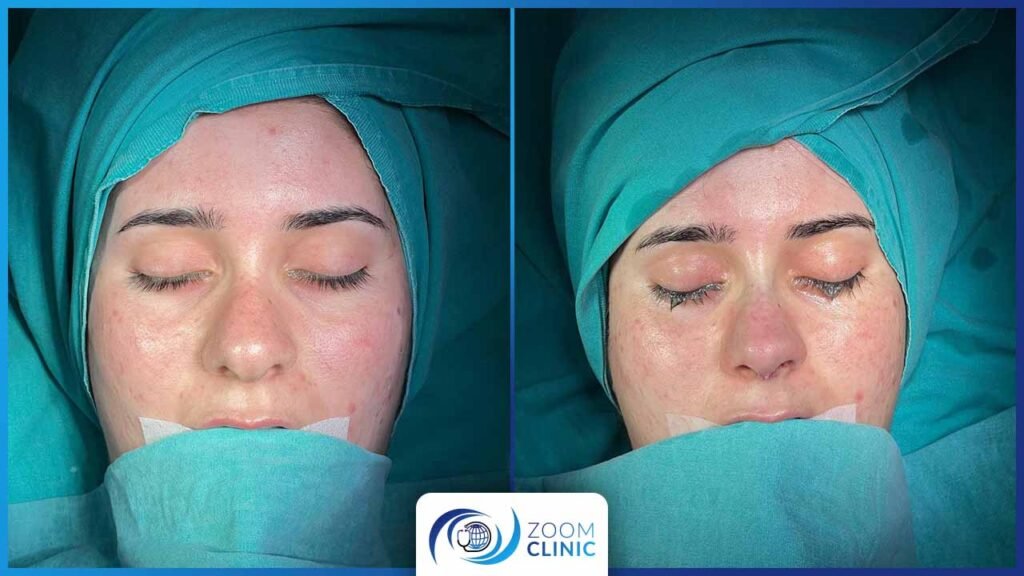
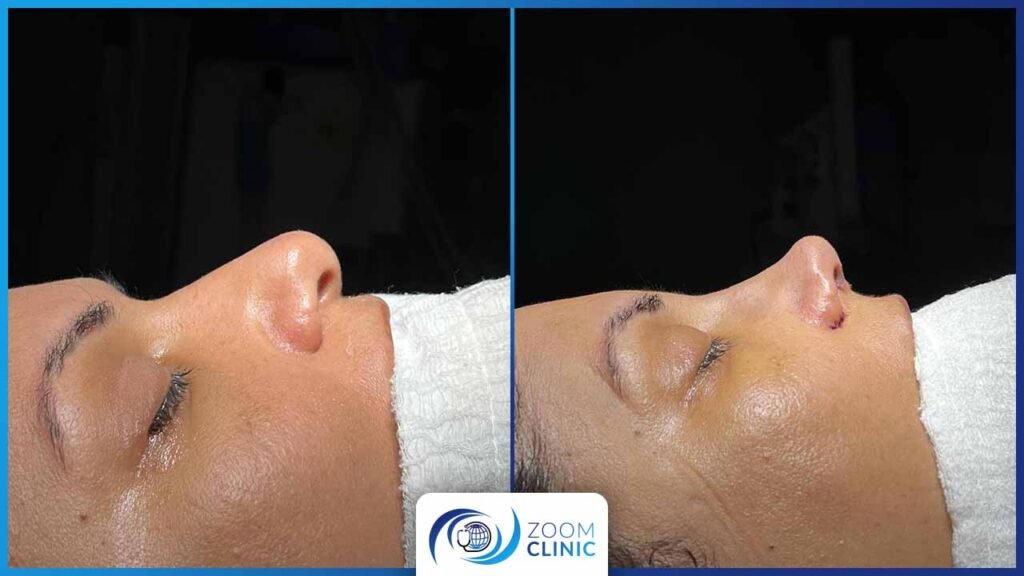
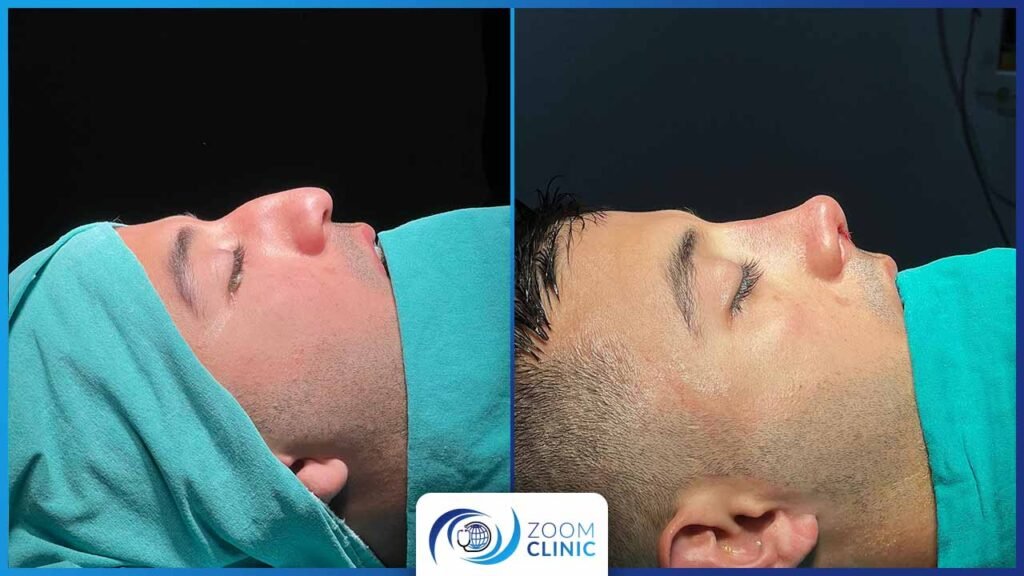
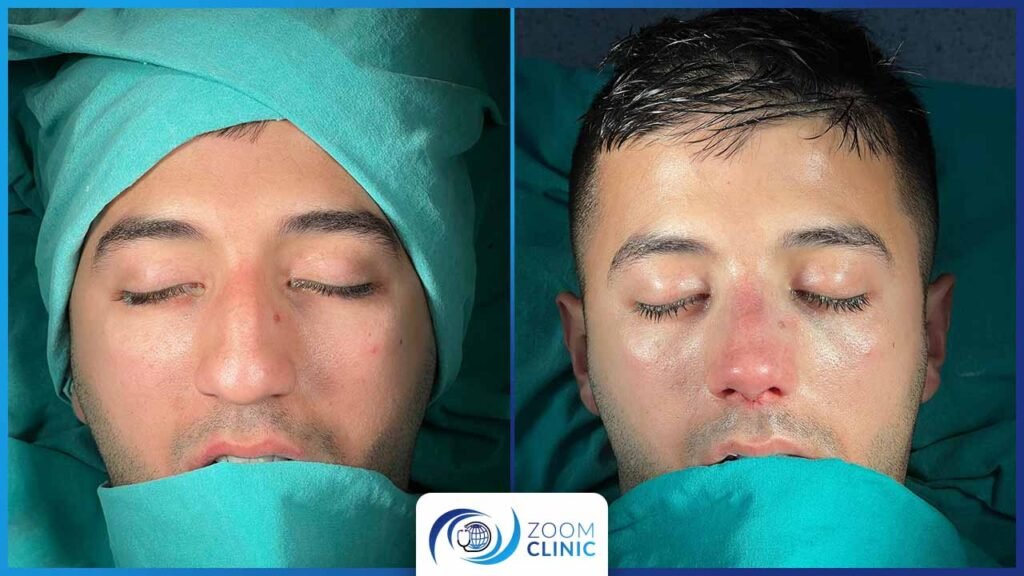
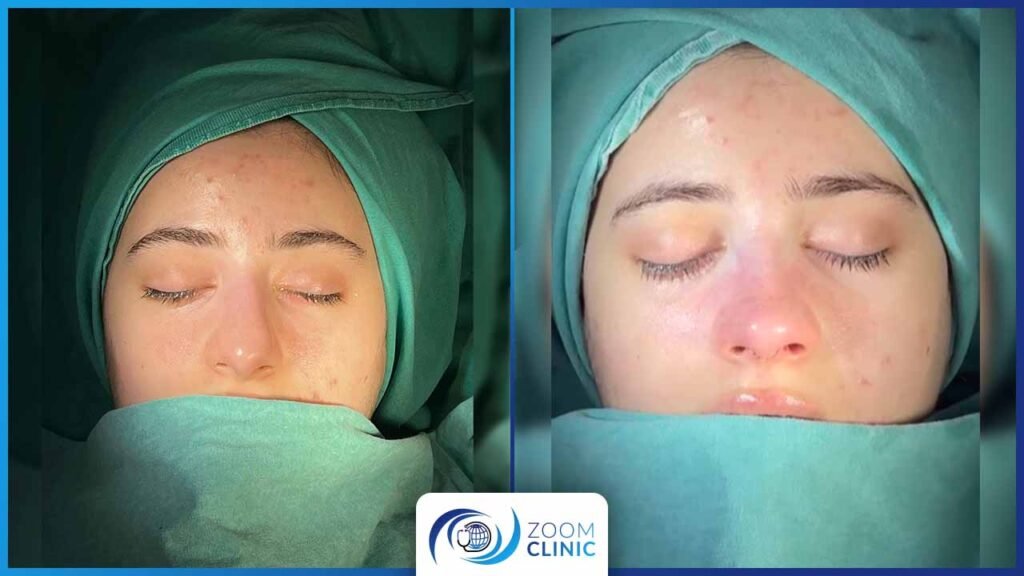
Conclusion
Understanding the differences between open and closed rhinoplasty is crucial for making an informed decision about your surgery. Both techniques have their unique advantages and limitations, and the choice ultimately depends on your specific goals and the complexity of the changes needed. At Zoom Clinic, the best rhinoplasty clinic in Turkey, our experienced surgeons are committed to helping you achieve your desired results, whether through open or closed rhinoplasty.
If you’re considering rhinoplasty and want to learn more about which approach is right for you, we invite you to schedule a consultation with our expert team. We’re here to guide you every step of the way, ensuring a safe and satisfying experience that leaves you feeling confident in your appearance.
Get the special offer today from Zoom Clinic
Related Articles:
Why Istanbul for Your Rhinoplasty Procedure

